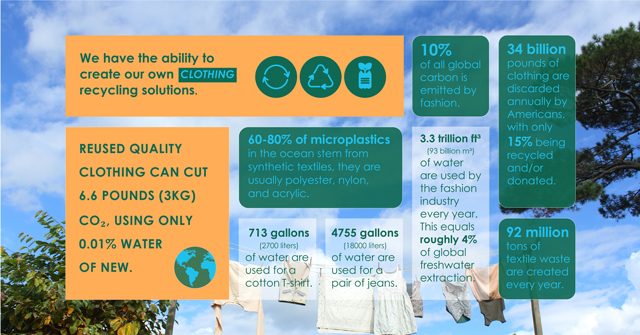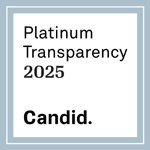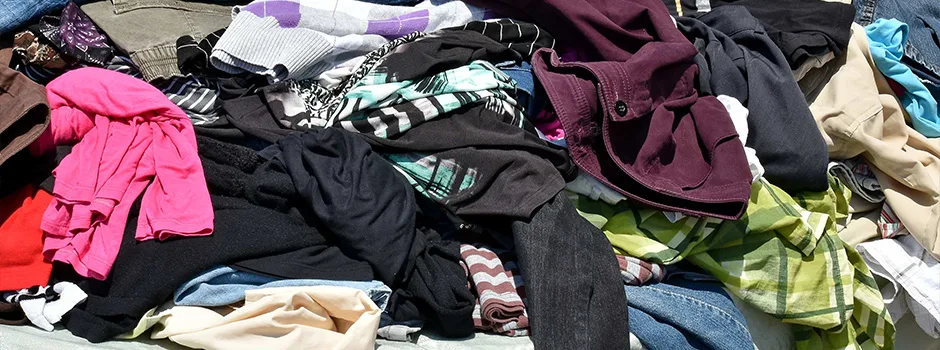
Best Small and Large-scale Clothing Recycling, Reuse, and Repurposing Community Options
Clothing is a resource that is present almost in all human communities. When we’re done with clothing, it doesn’t need to go landfills though, it can be recycled, reused and/or repurposed. We discuss small and large-scale approaches to both processes here and with the following sections:
- What is Clothing Recycling, Reuse, and Repurposing
- Why Open Source Clothing Recycling, Reuse, and Repurposing
- Ways to Contribute and Consultants
- Small and Large-scale Clothing Recycling
- Purchasing Sustainable Clothing
- External/Commercial Clothing Recycling Processes (Large-scale options)
- Recycling Your Own Clothing
- Comparing Cost and Labor for Recycling Options
- Starting a Clothing Recycling Business
- The Best Clothing Recycling/Repurposing Options
- One Community’s Plan for Recycling Clothing
- Resources
- Summary
- FAQ
RELATED PAGES (Click icons for complete pages)







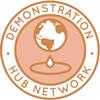
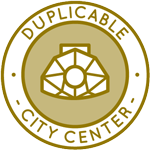
WHAT IS CLOTHING RECYCLING
 Clothing recycling is part of textile recycling. It involves recovering old clothing and shoes for sorting and processing to eventually create clothing suitable for reuse, cloth scraps, rags, or other repurposed fibrous materials. To successfully recycle-textiles, the materials must be collected and sorted before being processed for reuse.
Clothing recycling is part of textile recycling. It involves recovering old clothing and shoes for sorting and processing to eventually create clothing suitable for reuse, cloth scraps, rags, or other repurposed fibrous materials. To successfully recycle-textiles, the materials must be collected and sorted before being processed for reuse.
The complete clothing/textile recycling process can be summarized with the following steps:
- Collected clothing items are sorted into synthetic plastics or cotton (or other biodegradable material) and sent to different destinations.
- The biodegradable cloth is torn into fibers and combined with other fibers before being cleaned and spun.
- For synthetic plastics, the zippers and buttons are removed before the clothing is cut into smaller pieces. The shredded fabrics are granulated and shaped into pellets.
Here’s a summary of the process used by martexfiber:
Here is another illustration of the process:
WHY OPEN SOURCE CLOTHING RECYCLING
 We are facing an unprecedented need for clothing recycling because of the global population increase and the rise of rapid consumption and fast fashion. These trends are causing more and more clothing items to be discarded. As an example, data from the United States EPA showed around 16 million tons of textile municipal solid waste was generated just in 2015. All of this waste ends up in landfills, where it can take many years to decompose and can release carbon dioxide and other harmful gases into the atmosphere. Other synthetic textiles do not decompose at all, releasing harmful chemicals into the soil and groundwater.
We are facing an unprecedented need for clothing recycling because of the global population increase and the rise of rapid consumption and fast fashion. These trends are causing more and more clothing items to be discarded. As an example, data from the United States EPA showed around 16 million tons of textile municipal solid waste was generated just in 2015. All of this waste ends up in landfills, where it can take many years to decompose and can release carbon dioxide and other harmful gases into the atmosphere. Other synthetic textiles do not decompose at all, releasing harmful chemicals into the soil and groundwater.
An open source solution for communities can assist in addressing this serious issue. Through more effective, environmentally-friendly solutions, we can reduce the amount of clothing that is going to waste and ending up in landfills. The more communities implement solutions, the more people can actively participate in recycling their clothing. People-driven solutions like this are globally applicable, cost-effective, and can be profitable too.
WAYS TO CONTRIBUTE TO EVOLVING THIS SUSTAINABILITY COMPONENT WITH US
SUGGESTIONS | CONSULTING | MEMBERSHIP | OTHER OPTIONS
CLICK THESE ICONS TO JOIN US THROUGH SOCIAL MEDIA
RESEARCHER(S) FOR THIS COMPONENT:
Angela Mao: Sustainability Researcher
SMALL AND LARGE-SCALE CLOTHING RECYCLING
There are many, many options for recycling your clothing. To begin with, we’ll review existing options on both the individual and community level. Then, we will highlight strategies for starting your own textile recycling business in your local community. Strategies covered include clothing recycling strategies for large cities, suburban towns, rural areas, and more.
We discuss this with the following sections:
- Purchasing Sustainable Clothing
- External/Commercial Clothing Recycling Processes (Large-scale options)
- Recycling Your Own Clothing
- Comparing Cost and Labor for Recycling Options
- Starting A Clothing Recycling Business
- The Best Clothing Recycling/Repurposing Options
- One Community’s Plan For Recycling Clothing
PURCHASING SUSTAINABLE CLOTHING
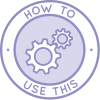 The first step in preventing large amounts of clothing from going to waste is to shop sustainably. There has been a rise in eco-friendly clothing that uses materials that are biodegradable or recycled. Materials like this reduce the volume of textiles going to landfills, textiles that can take a very long time to degrade.
The first step in preventing large amounts of clothing from going to waste is to shop sustainably. There has been a rise in eco-friendly clothing that uses materials that are biodegradable or recycled. Materials like this reduce the volume of textiles going to landfills, textiles that can take a very long time to degrade.
There are websites that “grade” the sustainability of certain brands. They thoroughly research their sourcing, transparency, and business practices. Here are two reliable resources for your sustainable fashion research!
- Good on You: They grade clothing companies based on their treatment of animals, the environment, and employees. They rank from “We Avoid” to “Great” and provide detailed information about each brand’s practices.
- Better World Shopper: They are dedicated to making social and environmental data available to consumers through a comprehensive database of over 2000 companies and utilizes 76 reliable sources of data so that the public can hold companies accountable.
There are also many lists of sustainable brands online. Here are some of the best ones we found.
- Article: “35 Ethical & Sustainable Clothing Brands Betting Against Fast Fashion”
- Article: “Over 45 of The Best Ethical & Sustainable Clothing Brands in 2020”
- Article: “26 Sustainable Clothing Brands to Shop If You’re Trying to Ditch Fast Fashion”
- Article: “The Ultimate 2019 Guide to the Top 25 Sustainable Brands to Try”
- Article: “Our Favorite Sustainable Brands”
Here is a sample of some of the many, many sustainable brands that use recycled fabrics.
- Reformation: According to their website, they recycle, compost organic wastes, and recycle or donate their textile scraps whenever possible. They also have a comprehensive list of the sustainable fabrics they use, as up to 2/3 of the sustainability impact of fashion happens at the raw materials stage – before the clothes have been made.
- Tradlands: This brand strives to use 98% of its materials and recycle any remnants to keep their waste to a minimum. They focus on producing quality clothing to reduce waste.
- Patagonia: It specializes in men’s and women’s activewear / outdoor clothing. According to its website, 72% of their line uses recycled materials, all their cotton is grown organically, and 100% of their down is certified to the Global Traceable Down Standard. Overall, they are transparent about their fabrics: their website breaks down the fabrics they use (recycled cotton, recycled polyester, etc) and they are working to becoming entirely carbon neutral. They also have plenty of environmentally friendly programs in place, such as their Responsible Wool Standard, Regenerative Organic Certification, and Material Traceability.
- Levi’s: Best known for their jeans, Levi’s designers have created over 20 alternative techniques for finishing denim, which traditionally uses unsustainable amounts of water. This process is called Water<Less® and it has saved more than 3 billion liters of water and recycled 5 billion more. Additionally, Levi’s Tailor Shops extend the life of your jeans by patching up rips, mending hems, and replacing buttons whenever you need.
- Eileen Fisher: This brand commits to using organic, recycled, and sustainable fibers such as hemp and Tencel. They support organic farming and are working towards increasing water efficiencies in their manufacturing process.
- Madewell’s: 60% of Madewell’s spring clothing collection is currently sourced more sustainably or made with Do Well materials. Some of the sustainable materials they use are recycled cotton, BCI cotton, wood pulp (Tencel lyocell and Lenzing ecovero fibers)
- Pact: Pact utilizes organic cotton, which uses up to 95% less water than conventional cotton during the wash phase and doesn’t contain the harsh chemicals, bleaches, or dyes that conventional cotton uses. Additionally, conventional cotton often requires the use of chemical-laden pesticides that increases the debt burden on the farmer and leaches into the land and water.
- Alternative Apparel: Their garments are crafted with sustainable materials & processes, including organic & recycled materials, low-impact dyes & water-conserving washes. They use organic cotton, post-consumer recycled polyester, low-impact dyes, and eco-friendly packaging.
- Thought: This brand sources natural, sustainable yarns that use less water, fewer pesticides, and create less CO2. They also upcycle their leftover fabrics at the source to reduce waste and create new products. Materials are sourced from natural, organic, renewable, and recycled sources wherever possible.
- ASOS’s Responsible Edit: This is an online store who allows you to shop environmentally conscious clothing, accessories, and living items. The clothes in this collection include items made of recycled goods, where waste, plastic, and textiles have been recreated as new products. There are also sustainable fibers and fabrics, which use less water and create less waste along the way, making these buys better for the environment.
LARGE-SCALE CLOTHING RECYCLING
Large cities need to be able to provide a streamlined service for their many residents. Many big cities have the advantage of having large-scale recycling programs already in place, so adding a textile recycling portion is much easier. They also usually have access more to funding and labor. We’ll look at several examples of recycling programs in cities that are pretty effective already.
EXAMPLES OF BIG-CITY CLOTHING RECYCLING PROGRAMS
To illustrate how clothing recycling works in large cities, here are 3 big clothing recycling programs from New York City.
- RefashionNYC: This organization collaborates with the NYC Department of Sanitation and is NYC’s official clothing reuse program. It offers a convenient in-building service to make textile donations more convenient. To receive this service, an application must be filled out online and only certain buildings are eligible, such as apartment buildings with over ten units, office buildings, commercial businesses (such as the fashion industry, storage facilities, gyms, laundromats, and hotels), and schools and institutions. The Department of Sanitation NY will then pay a visit to your building to discuss how many bins you need, what size bins, and where they should be placed. Clothing and accessories donated through refashionNYC are sorted out at the Housing Works warehouse in Queens.
- Pickup Please: Vietnam Veterans of America partnered with the United Postal Service (UPS) to bring New Yorkers a free and easy way to donate their used clothing, shoes, and accessories. All residents have to do is gather their unwanted clothes, shoes, and accessories, box it up, fill out an online form, and receive free pre-paid shipping labels. They can then take it to any UPS store or UPS pick-up location.
- growNYC: Residents can drop off old clothing and textiles at greenmarkets throughout the city. growNYC collects these textiles and then takes them to a facility where they are sorted into different grades. Materials that are suitable for reuse are distributed to second-hand stores and materials that are not reusable are sent to recycling markets where they get repurposed as wiping rags or shredded for low-grade fiber products.
SUCCESSFUL TEXTILE RECYCLING PROGRAM OVERVIEW
Another successful textile recycling program used in US towns and cities is Simple Recycling. Some of the Cities That Currently Partake in Simple Recycling are Stamford, Somerville, Medford, Cincinnati, and Durham. Read on to learn how it works.
Residents are provided with pink bags that they can fill with unwanted clothing, drapes, bedspreads, blankets, and other textiles. Shoes, sneakers, belts, handbags, and similar items are also accepted. Simply Recycling then collects them for free. When a bag is picked up, residents receive a replacement bag in exchange.
To maximize efficiency, the operation depends on electronic tablets equipped with GPS that Simple Recycling installed in eight city recycling trucks. When city drivers are out collecting recyclables from the green bins, they tap a button on the tablet each time they spot a pink bag. This sends GPS coordinates for that address to Simple Recycling. Drivers for Simple Recycling then pick up the bags at the identified addresses.
The pink bags are delivered to a facility Simple Recycling operates, where they are weighed and then trucked out to be sorted and sold to thrift stores for resale or companies that make rags or convert textiles into insulation, carpet padding, and other products. As part of the contract, Simple Recycling will pay the city one cent for each pound of material collected. As an indicator of the program’s success, the city of Cincinnati estimates this program is diverting at least 1,000 tons of material from landfills each year, which also results in an estimated $70,000 of revenue per year for the cit.
RECYCLING YOUR OWN CLOTHING
 If your city doesn’t offer a general recycling plan, consider these small-scale options that any individual can use. These independent solutions can be effective for someone living in most any suburban or rural area.
If your city doesn’t offer a general recycling plan, consider these small-scale options that any individual can use. These independent solutions can be effective for someone living in most any suburban or rural area.
SMALL-SCALE OPTIONS
- One obvious idea is to donate your old clothing to thrift stores and charity shops. Only about 20 percent of the clothing donated to places like Goodwill and the Salvation Army even gets sold. The rest is sold to textile recyclers. The companies get money for the clothing, and that money goes towards charities. You can also donate to online consignment stores like ThredUp and TheRealReal. However, make sure you ask about what that specific thrift store does with its items afterward – some stores just discard the clothing to landfills, which does not help.
- You can also donate to large organizations that collect specific types of clothing, such as The Bra Recyclers, Souls 4 Soles, and the Blue Jeans Go Green program.
- For clothes that aren’t fit to be donated, these organizations will accept a variety of clothing in different conditions. Recycle Now, PlanetAid Bins, Secondary Materials and Recycled Textiles, Donation Town, Council for Textile Recycling.
- You and a group of your friends can organize a clothing swap, this is a perfect way to receive new clothes and discard clothing you do not wear anymore.
- The classic garage sale is a great way to give your clothing (that’s in relatively good condition) a new life and generate a profit at the same time.
REPURPOSING YOUR CLOTHING
Repurposing your old clothing is another great option. Old clothing can be used as rags around the house and even for compost if it is a biodegradable fabric. A stained, oversized shirt is handy when doing any sort of painting or other messy activities. If you own a sewing machine, you can create a variety of different items with something like an old t-shirt: tote bags, quilts, and blankets to sell on Etsy, a bag, or a stuffed animal, etc.
Here’s a list of some fun ideas!
FINDING STORES THAT WILL RECYCLE YOUR CLOTHING FOR YOU
Some companies will accept their clothing items back for recycling and even accept clothing from any brand. Here is a list of some of the biggest names.
ZARA
 Zara allows customers to drop off clothing that they no longer use in containers found in their stores. They deliver your items to a non-profit organization that manages the textiles and developed projects in the community (available at select stores).
Zara allows customers to drop off clothing that they no longer use in containers found in their stores. They deliver your items to a non-profit organization that manages the textiles and developed projects in the community (available at select stores).
PATAGONIA
 Patagonia accepts its own clothing for recycling. After washing the items, you simply have to mail them to the Patagonia Service Center or drop them off at the Patagonia Retail Store or a participating Patagonia dealer.
Patagonia accepts its own clothing for recycling. After washing the items, you simply have to mail them to the Patagonia Service Center or drop them off at the Patagonia Retail Store or a participating Patagonia dealer.
H&M
 H&M allows you to drop off a bag of unwanted clothing in the recycling box at your local H&M. All textiles are welcome (brand and condition do not matter) and are sent to the nearest recycling plant.
H&M allows you to drop off a bag of unwanted clothing in the recycling box at your local H&M. All textiles are welcome (brand and condition do not matter) and are sent to the nearest recycling plant.
AMERICAN EAGLE OUTFITTERS
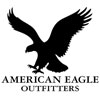 American Eagle is partnered with Cotton Inc.’s Blue Jeans Go Green program, so the jeans you drop off are converted into home insulation. Aerie also works with NGO “Free the Girls” to start a bra give-back program in all stores.
American Eagle is partnered with Cotton Inc.’s Blue Jeans Go Green program, so the jeans you drop off are converted into home insulation. Aerie also works with NGO “Free the Girls” to start a bra give-back program in all stores.
LEVI’S
 Levi’s is partnered with Cotton Inc.’s Blue Jeans Go Green Program, so you can drop off your jeans at any Levi’s store and they will recycle them for you.
Levi’s is partnered with Cotton Inc.’s Blue Jeans Go Green Program, so you can drop off your jeans at any Levi’s store and they will recycle them for you.
THE NORTH FACE
 The North Face’s Our Clothes the Loop program allows customers to drop off unwanted clothing and footwear at The North Face retail stores and outlet stores. They accept apparel and footwear under any condition and from any brand.
The North Face’s Our Clothes the Loop program allows customers to drop off unwanted clothing and footwear at The North Face retail stores and outlet stores. They accept apparel and footwear under any condition and from any brand.
NIKE
 Nike’s Reuse-A-Shoe Program allows you to drop off any brand of athletic sneakers at a participating Nike retail store in North America or Europe. They take these old athletic shoes, grind them up, and use them to create courts, fields, tracks, and playgrounds.
Nike’s Reuse-A-Shoe Program allows you to drop off any brand of athletic sneakers at a participating Nike retail store in North America or Europe. They take these old athletic shoes, grind them up, and use them to create courts, fields, tracks, and playgrounds.
VANS
 Vans has a program where customers can drop off old or unwearable shoes. These shoes are converted into park benches, phone cases, skateboard decks and more through a partnership with the recycling company TerraCycle.
Vans has a program where customers can drop off old or unwearable shoes. These shoes are converted into park benches, phone cases, skateboard decks and more through a partnership with the recycling company TerraCycle.
COLUMBIA
 Columbia has a ReThreads Program, which allows customers to bring in their used clothing and shoes in clean, dry conditions, at participating retail stores in the United States. The garments and footwear are sent to a textiles processing facility through I:CO
Columbia has a ReThreads Program, which allows customers to bring in their used clothing and shoes in clean, dry conditions, at participating retail stores in the United States. The garments and footwear are sent to a textiles processing facility through I:CO
MEDIUM-SCALE OPTIONS
There are many textile recycling programs communities can partner with. These are medium-scale options, not meant for the individual person. Through research, Simple Recycling has been identified as one of the most reliable, popular, and affordable options.
SIMPLE RECYCLING
 Simple Recycling collaborates with various cities for their recycling program and handles all aspects of the program, including launch, collection, processing, and management. Simple Recycling trucks follow the existing trash or recycling collection schedule. The municipality will be compensated on a “per pound” basis for the material collected by Simple Recycling. Here’s a video illustrating the process:
Simple Recycling collaborates with various cities for their recycling program and handles all aspects of the program, including launch, collection, processing, and management. Simple Recycling trucks follow the existing trash or recycling collection schedule. The municipality will be compensated on a “per pound” basis for the material collected by Simple Recycling. Here’s a video illustrating the process:
We also found several other clothing recycling options, but we aren’t as confident about their reliability/availability due to lack of information and/or bad online ratings. You may want to Google them for your specific area though to see if they are available and, if they are, offer more area-specific reviews: Terracycle, I: CO City Program, Green City Recycler, Recycling Partnership, and American Textile Recycling Service
COMPARING COST AND LABOR FOR RECYCLING OPTIONS
Here is a cost and labor comparison for all the options discussed on this page.
STARTING A CLOTHING RECYCLING BUSINESS
 Now let’s explore starting your own clothing recycling business. This could be a great way to make money while also doing something good for the environment. The first thing you have to consider with a venture like this is how you are going to collect all of the clothing/fabric you need. For your local community and depending on size and density, there are several methods you can consider.
Now let’s explore starting your own clothing recycling business. This could be a great way to make money while also doing something good for the environment. The first thing you have to consider with a venture like this is how you are going to collect all of the clothing/fabric you need. For your local community and depending on size and density, there are several methods you can consider.
For collection, consider setting up bins in town centers or schools – any area that the people in your community tend to congregate is a great choice. If your area has low population density, consider driving around your town and asking for old clothing from your neighbors. Make sure that you make it clear what you plan to do with their old clothes.
The next step is to decide what to do with the clothing. First, separate the clothing by quality and fabric type. Separate clothes into resellable and non-resellable, and the non-resellable into organic fabrics and synthetic fabrics.
You now have several options. For high-quality clothing, consider either setting up a garage sale or driving to the nearest thrift store. For the clothing that is of lesser quality, consider repurposing. You can make creations for family, your community, or to sell on Etsy. Some potential creations include flower accessories, sleeping bags, quilts, stuffed animals, etc. Some especially creative ideas are to convert old socks into sock monkeys for children, create new scarves from old flannels, and/or turn your old button-ups into pillow covers. You can also compost organic cloth for your garden or use old pieces of fabric as rags, a great way to also avoid using so many paper towels! Even if the textile is stained or torn, it can be cut up into strips and used to stuff pillows or stuffed animals or provide insulation. If you want a more comprehensive list of project ideas, check out these articles and their ideas
- Article: “50+ Clever Things You Can Do With Old Clothes”
- Article: “15 upcycled clothing ideas you’ll actually want to wear”
- Article: “20 Old Clothes Recycle Ideas That You Need to Upcycle Old Wardrobe Items”
If it is your own local “business”, you will not have the machinery to process synthetic fabrics that you haven’t repurposed. For whatever fabric is leftover you can research the closest large-scale textile recycling facility and drop it off.
IMPORTANT RECYCLING BUSINESSES CONSIDERATIONS
If you are going to start your own clothing recycling business, here’s a list of important considerations:
- You need a steady supply of unwanted textiles/clothing that you can collect. Some common methods of the collection include boxes in parking lots or by the street.
- Figure out what equipment your textile recycling business needs to function. For instance, you would need equipment/a method to sort the textiles before using a textile recycling device that can shred it and separate it into fibers. Make note that if you try to process synthetic fabrics, you will need a machine that can granulate the material.
- You will have to figure out the cost of transportation for your textiles to be transported back to your facility.
- You must identify a buyer who is willing to collect whatever material you have converted the old clothing to , whether that be cloth, yarn, or wool. Some examples are textile factories, fashion retailers, tailors, and art shops.
- In order for your business to be sustainable and successful, you’ll have to make sure to draw up a good financial plan that will support the capital and labor required. Remember that you’ll have to account for the cost of equipment, business materials, site rental, transport, energy, and wages.
- When you sell your recycling fabrics, make sure to charge a price that will be able to support your operating costs. For initial funding, you can look towards local grants, crowdfunding, or peer-to-peer lending.
- If you want to learn more about starting your own textile recycling business, here’s a website we found helpful.
LARGE-SCALE CLOTHING RECYCLING BUSINESS EXAMPLES
Recycling is a growing industry and creating your own for-profit textile recycling program might be worth exploring. There are plenty of businesses out there to take inspiration from. Here are 3 successful examples:
USAgain
 USAgain is a for-profit company that collects discarded, used or unwanted clothing items through boxes located outside municipalities and schools. USAgain generates its profits by selling its collected items to wholesalers, resale shops, and companies that break down the materials to make other items such as car fibers and mattress padding. USAgain sells approximately 80 percent of its collections to resale stores and wholesalers, while about 20 percent is recycled into new materials.
USAgain is a for-profit company that collects discarded, used or unwanted clothing items through boxes located outside municipalities and schools. USAgain generates its profits by selling its collected items to wholesalers, resale shops, and companies that break down the materials to make other items such as car fibers and mattress padding. USAgain sells approximately 80 percent of its collections to resale stores and wholesalers, while about 20 percent is recycled into new materials.
Ecosmith Recyclers, Inc.
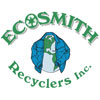 Ecosmith Recyclers is a sustainable, family owned and operated, for-profit clothing and shoe recycling business. People place their unwanted clothing and textiles in Echosmith bins and their team members drive around and collect the recycled clothing. They then work with various groups to coordinate the sale and transport of the recycled clothing and shoes.
Ecosmith Recyclers is a sustainable, family owned and operated, for-profit clothing and shoe recycling business. People place their unwanted clothing and textiles in Echosmith bins and their team members drive around and collect the recycled clothing. They then work with various groups to coordinate the sale and transport of the recycled clothing and shoes.
Chicago Textile Recycling
 Chicago Textile Recycling provides textile recycling outlets and fundraising opportunities for area organizations, businesses, and municipalities. It is a family-run business in Hillside that sells items for reuse or to be recycled into new products.
Chicago Textile Recycling provides textile recycling outlets and fundraising opportunities for area organizations, businesses, and municipalities. It is a family-run business in Hillside that sells items for reuse or to be recycled into new products.
BEST RECYCLING/REPURPOSING OPTIONS
Many situations benefit from different clothing recycling/repurposing options. We discuss here what we consider to be the best recycling/repurposing options for the three main living situations people find themselves in.
FOR LARGE CITIES
Many large cities already have some form of textile recycling in place. If you’re looking to recycle in a large city, you should have access to many thrift stores where you can donate clothing you have that is in good condition. You’ll also have access to stores like H&M where you can discard clothing that’s not in great shape. There are often also bins that nonprofits will place around the city. In a densely populated city like New York City, programs similar to refashionNYC seem to be conducive to the type of housing many city residents live in. Contact your local city government to see if such a program exists or if one could be implemented. Another popular option is the Simple Recycling Program, which could be fairly easily implemented in most large cities. Not only does it come at no cost for the citizens, but it also provides a convenient method for recycling.
FOR SUBURBAN TOWNS
There are many, many options for suburban towns to implement textile recycling initiatives. For town-wide recycling, Simple Recycling is definitely an option for medium-sized towns who already run regular trash pick up days. For the individual, there are plenty of options for textile recycling too. Thrift stores are the best first destination to drop off the unwanted items that are of the best quality, and thrift stores in suburban areas are probably also just a short drive away. Additionally, large textile recycling charities and organizations may have bins set up either in a suburb or another town close by. Large shopping malls often have stores like Zara and H&M that accept clothing to be recycled too.
FOR RURAL/SMALL TOWNS
A big issue with recycling services in small and rural towns is that they do not have the same volume of recovered material that big cities do, which make curbside programs less economically viable. Small towns also lack alternative service options if they lose a recycling contractor. Transportation costs are also substantially higher because the population is so spread-out, making curbside programs less feasible. If you live in a rural area, you can help address this by coming up with a feasible way to collect clothing. As mentioned earlier in the Starting a Clothing Recycling Business section, one person can make a difference by driving around and collecting old clothing for the entire community. After you collect the clothing, you can drop it all off at a thrift store or, if you would like to convert the operation into you own “recycling business”, you can engage in the process of sorting, selling, and repurposing the clothing.
ONE COMMUNITY CLOTHING RECYCLING PLAN
 Moving forward, One Community has developed a plan to recycle all textile and clothing items. The first step in our textile recycling operation will be to organize the clothing by quality and type. Durable clothing that is in good shape will be shared with other community members, donated to thrift stores, or possibly even sold. As for clothing that is unfit to be worn again, we will seek to repurpose it through composting (organic fibers only), arts and crafts, etc. or drop it off at select retail stores like the ones listed above. Repurposing will also be applied in the form of converting old socks into sock monkeys or other animals, creating scarves out of old flannels, and converting old t-shirts into quilts, bags, etc. DIY projects like these will be kept for the community or possibly offered for sale online through sites like Etsy.
Moving forward, One Community has developed a plan to recycle all textile and clothing items. The first step in our textile recycling operation will be to organize the clothing by quality and type. Durable clothing that is in good shape will be shared with other community members, donated to thrift stores, or possibly even sold. As for clothing that is unfit to be worn again, we will seek to repurpose it through composting (organic fibers only), arts and crafts, etc. or drop it off at select retail stores like the ones listed above. Repurposing will also be applied in the form of converting old socks into sock monkeys or other animals, creating scarves out of old flannels, and converting old t-shirts into quilts, bags, etc. DIY projects like these will be kept for the community or possibly offered for sale online through sites like Etsy.
One Community will open source here our complete process as we grow our community to 1000+ residents and host over 100,000 overnight visitations annually. Our goal in doing this is to provide an open source example for other communities/organizations that want to take textile recycling into their own hands, especially in situations where local recycling services aren’t available.
RESOURCES
Here are the resources referenced above:
- Article: “Clothes Recycling Goes Curbside as Demand Rises”
- Article: “How to Recycle Clothing and Accessories”
- Article: “How To Recycle Clothes & Shoes That Aren’t In Good Condition”
- Article: “How Clothing Recycling Works”
- Article: “The Basics of Textile Recycling”
- Article: “Where to Recycle and Donate Your Own Clothes”
- Article: “Can Clothing Be Recycled? How to Give Your Old Clothes New Life”
- Article: “Why Recycle Shoes and Clothing?”
- Article: “National Thrift Store Directory”
- Article: “Lets Go Thrifting! The Ultimate Guide to Thrift Store Success”
- Article: “21 Best Sustainable Fashion Brands You Can Actually Trust”
- Article: “Ready-to-Waste: America’s Clothing Crisis”
- Article: “The Brands With the Best Clothing-Recycling Programs”
- Article: “10 companies that reward you for recycling old products you don’t want or use anymore”
- Article: “Fashion’s latest trend? Why H&M, other big brands are investing in garment recycling”
Here are some other resources we found useful:
- Better World Shopper – A public research project for ethical consumers
- Good on You – A website for ranking clothing sustainability
- Article: “Textile Recycling 101: All You Need To Know About How to Divert More Material from Landfills”
- Article: “7 Creative Ways to Upcycle Your Old Clothes”
- Article: “100 Ways to Upcycle your clothing”
- Article: “40 Mindblowing Ways to Repurpose Old Clothing”
- Article: “11 Innovative Ways to Repurpose Old Clothes”
- Article: “50+ Clever Things You Can Do With Old Clothes”
- Article: “15 Upcycled Clothing Ideas You’ll Actually Want to Wear”
- Article: “20 Old Clothes Recycle Ideas That You Need to Upcycle Old Wardrobe Items”
- Use this page (click here) if you have a resource you’d like to suggest be added here
SUMMARY
 One Community has invested extensive time and research into the best small and large-scale recycling, repurposing, and reuse options for clothing (and plastic, glass, polystyrene/styrofoam, paper, food and other perishable items, and even non-recyclables). Categorizing the clothes looks to be the easiest and most sustainable option. High-quality reusable clothing will be shared, donated, repurposed, or sold. Non-reusable clothing will be composted (if it isn’t synthetic fibers), used for rags, insulation, or handled as a non-recyclable. We will open source share here our group’s experience with all of this as part of the development of the Earthbag Village and Duplicable City Center. We will evolve this page with videos and other data from this process as we use what we learn to help us improve our recycling, repurposing, and reuse strategies as we build each of the next 6 sustainable village models and grow to a community of hundreds.
One Community has invested extensive time and research into the best small and large-scale recycling, repurposing, and reuse options for clothing (and plastic, glass, polystyrene/styrofoam, paper, food and other perishable items, and even non-recyclables). Categorizing the clothes looks to be the easiest and most sustainable option. High-quality reusable clothing will be shared, donated, repurposed, or sold. Non-reusable clothing will be composted (if it isn’t synthetic fibers), used for rags, insulation, or handled as a non-recyclable. We will open source share here our group’s experience with all of this as part of the development of the Earthbag Village and Duplicable City Center. We will evolve this page with videos and other data from this process as we use what we learn to help us improve our recycling, repurposing, and reuse strategies as we build each of the next 6 sustainable village models and grow to a community of hundreds.
FREQUENTLY ANSWERED QUESTIONS
Q: How do I implement these recycling plans into my own city?
A lot of options for larger cities and suburbs were listed above. You should contact your local city leadership to see what is available and what they might be open to if you are looking to implement something citywide. Or could take the initiative yourself, ask your neighbors and community to pitch in by donating or recycling their clothing.
Q: My town doesn’t offer a municipal textile recycling program, what are the best options to recycle my old clothing?
Look for non-profits that might have bins in your areas, local thrift stores, and the other options that were listed above.
Q: How do I start my own clothing recycling business?
Check out the guide above!
Q: How do I make sure that my clothing is recycled properly and doesn’t just end up in landfills?
This will require you to do your own research, specific to where you live, and what method you wish to use. We suggest reading reviews of the organizations and see if there have been negative comments or articles about them online.
 One Community
One Community